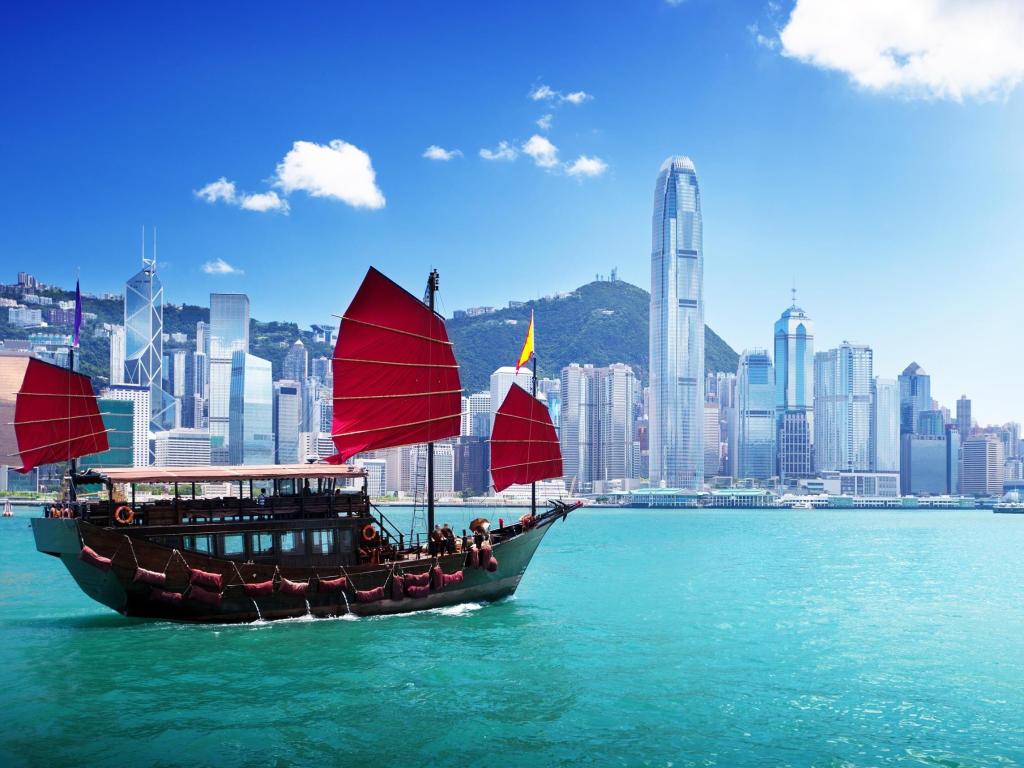Hong Kong harbour. Shutterstock.
After New York and London, Hong Kong is internationally acknowledged as the third largest auction market in the word. But now Hong Kong is poised to assert itself as the creative and cultural epicentre of Asia – interrupting the global art ecology, and changing the game in the art landscape.
‘With the rapid rise of ART HK: Hong Kong International Art Fair, which debuted in 2008, MCH Group’s acquisition of the fair in 2011, and its subsequent rebranding as Art Basel in Hong Kong in 2013 the city’s position as an annual convening point for the international art world was affirmed,’ writes art expert and expat Magnus Renfrew in Uncharted Territory: Culture and Commerce in Hong Kong’s Art World.
In this new book published by Penguin Specials, Renfrew, founder of ARTHQ / Group a leading service provider for the art world, and noted founding director of Art Basel in Hong Kong from 2012-2014, outlines the dramatic changes that are occurring in this kaleidoscopic city.
‘An array of international galleries continues to set up shop in Hong Kong, despite the high overheads and low ceiling heights.’
HONG KONG’S RAPID RISE
It’s not only the stratospheric rise of the art fair and the accelerated way in which international galleries are positioning themselves in Hong Kong that is changing the cultural landscape.
‘On an even more ambitious scale is the government’s investment in M+, the 40 000 square metre institution dedicated to visual culture, scheduled to open – after a seemingly endless series of delays – in 2019. This has the potential to be a game-changer.’
In his book, Uncharted Territory, Renfrew explains that M+ is projected to rival in scale the Tate Modern in London and MoMA in New York. ‘This opportunity is not once in a generation but once in a century or more – the chance to create in Hong Kong’s image a forward-looking institution of global significance for the twenty-first century.’
Renfrew looks to the local philanthropic environment for the boost that Hong Kong will need to make M+ the competitive institution in the region. ‘The combined net worth of the top 50 individuals in Hong Kong stands at US$242 billion. This demonstrates that there is considerable, and as of yet, largely untapped potential for cultural philanthropy,’ he asserts.
Along with the infrastructural changes, the city’s identity is increasingly being re-defined by the local art scene and by the international attention the city garners. ‘Add to that picture a vibrant community of artists, plus the presence of publications disseminating a fairly-balanced, less West-centric perspective of the world, and the cultural ecology begins to come together,’ he notes.
With the City’s brimming potential Renfrew comments in Uncharted Territory that ‘the future potential of the art scene in Hong Kong is partially dependent on acknowledging diverse influences on the city’s cultural identity: its local Hong Kong and Cantonese culture, the diverse cultures of its multi-generational non-Chinese immigrant population, its colonial past, its openness to new thing and, essentially, its internationalism.’
Renfrew’s deep analysis of the rapid changes occurring in the international art world is explored thoroughly in Uncharted Territory.
‘As the influence of Asia rises as it surely will – Hong Kong’s role to present a balanced and holistic world view has the potential to take on additional significance,’ Renfrew poses.
Magnus Renfrew’s Uncharted Territory: Culture and Commerce in Hong Kong’s Art World is available now.





